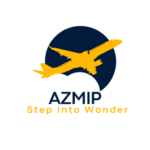I’ll never forget the moment I decided to pack my bags for Alberta, Canada. It was one of those spontaneous decisions that come from scrolling through Instagram late at night, seeing those impossibly beautiful mountain peaks dusted with pristine snow and thinking, “I need to be there.” As someone who’s been chasing adventure around the globe, documenting my experiences, I thought I’d seen it all. But Alberta? Alberta was about to rewrite my definition of winter wonderland.
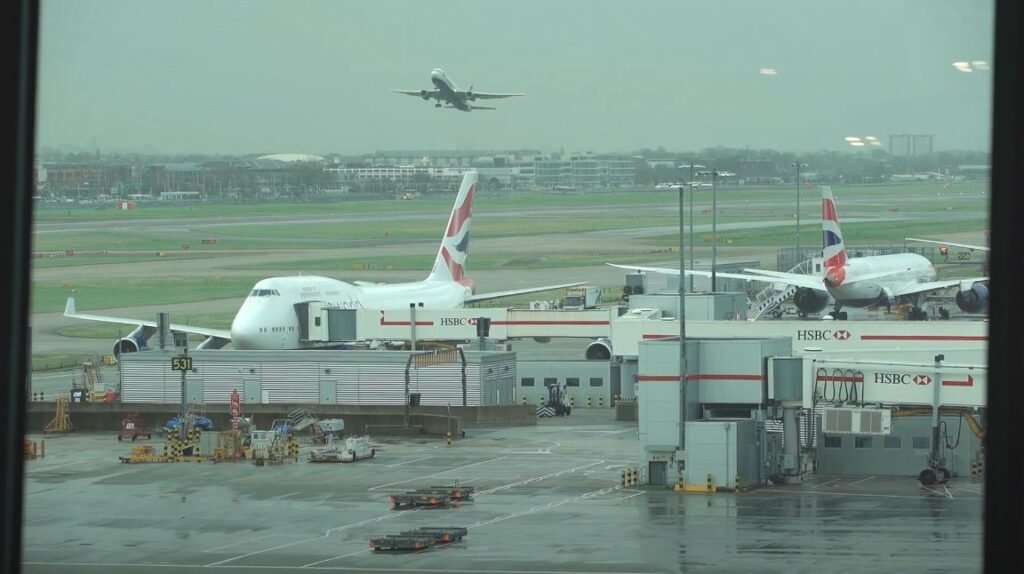
Standing at London Heathrow Airport, watching the British Airways aircraft being prepped for departure, I felt that familiar rush of excitement mixed with nervous anticipation. This wasn’t just another trip; this was going to be my deep dive into one of the world’s premier skiing destinations. I’d heard whispers from fellow travelers about Lake Louise, Banff and the endless powder runs that awaited in the Canadian Rockies. But hearing about it and experiencing it are two entirely different things.
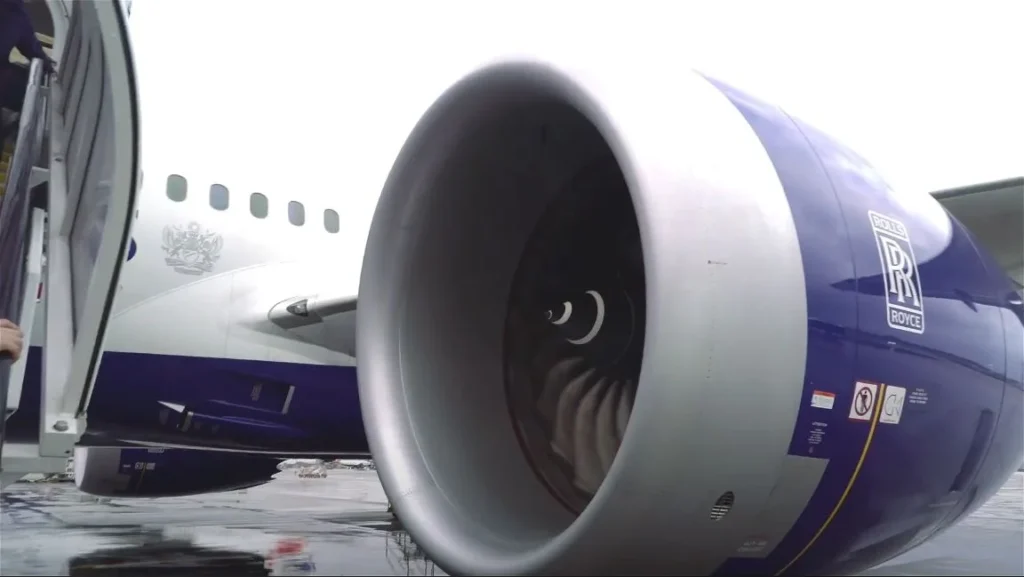
As I boarded the plane and settled into my seat, I couldn’t help but admire the massive Rolls-Royce engines that would carry me across the Atlantic. There’s something poetic about modern aviation – these engineering marvels that make our adventure dreams possible. Little did I know that the real marvels awaited me on the ground, not in the sky.
The Journey Begins: Touching Down in the Great White North
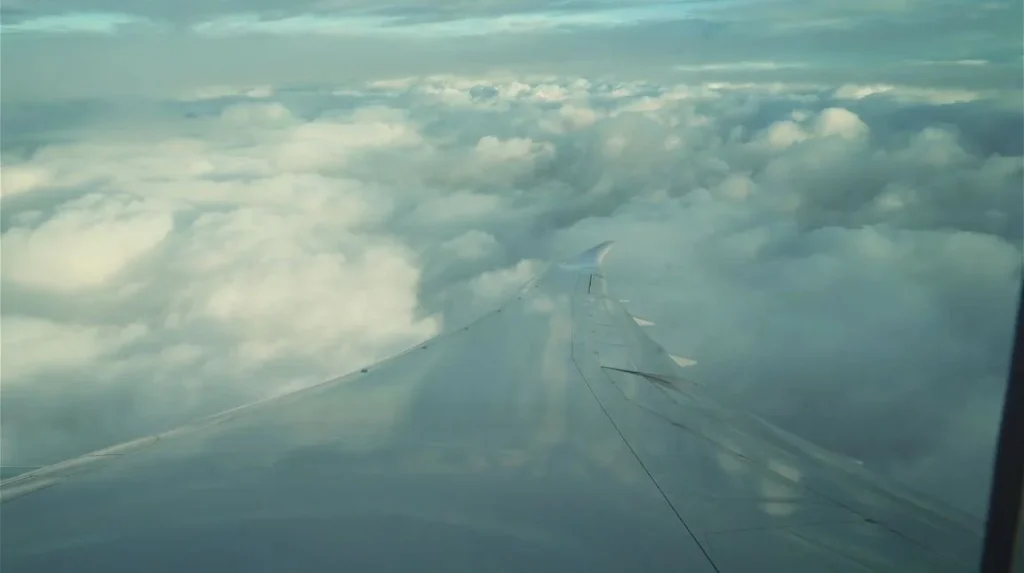
The flight itself was mesmerizing. Breaking through the cloud cover, I watched the world transform beneath me. The soft, cotton-like formations stretched endlessly and I found myself lost in thought, planning my itinerary, thinking about the slopes I’d conquer and the stories I’d bring back to share with my readers.
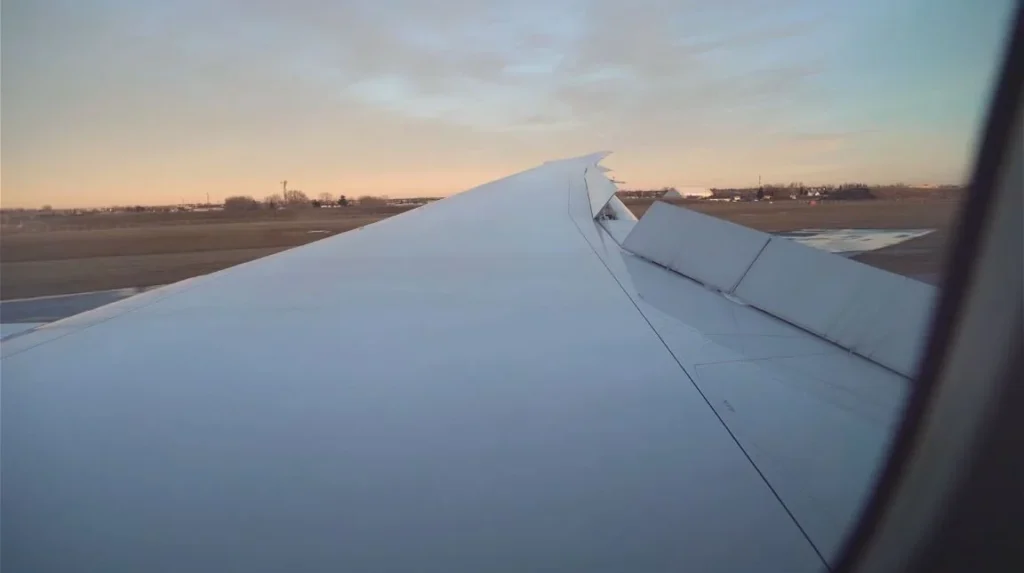
Landing in Calgary was my gateway to the adventure. The crisp Canadian air hit me the moment I stepped off the plane – sharp, clean and carrying that distinct smell of pine and snow that you just don’t get anywhere else.
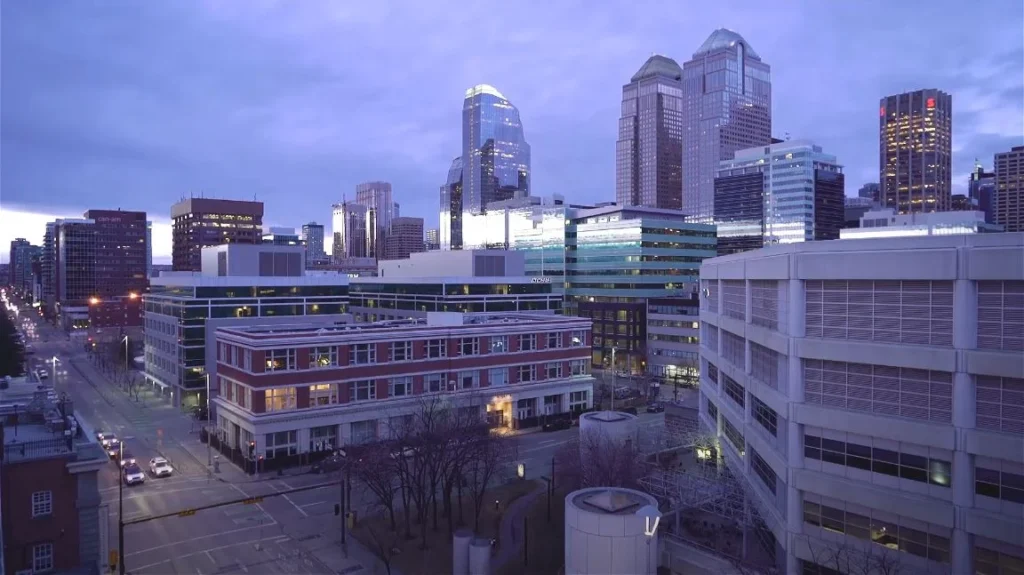
Calgary surprised me. I’d expected a jumping-off point, a necessary stopover before heading to the mountains. Instead, I found a vibrant, modern city with an impressive skyline that glowed against the evening sky. The downtown core was alive with energy, a cosmopolitan hub that perfectly balanced urban sophistication with that unmistakable Western Canadian friendliness.
First Night: Settling Into Hotel Arts
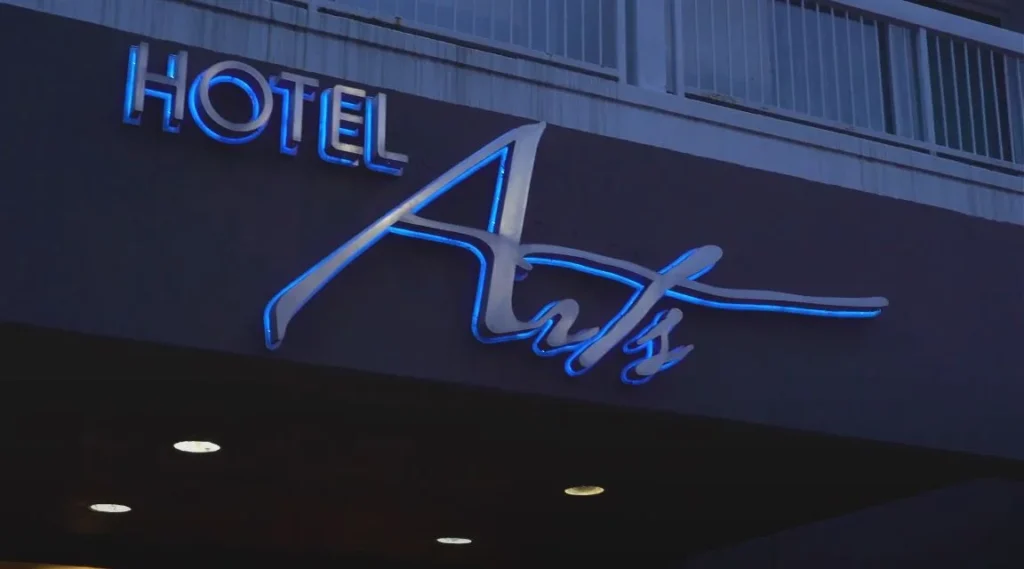
I checked into Hotel Arts and I have to say, the contemporary design and artistic vibe set the perfect tone for my trip. Located in Calgary’s cultural district, this boutique hotel wasn’t just a place to sleep – it was an experience in itself. The modern architecture, the carefully curated artwork adorning the walls and the attention to detail in every corner made me feel like I was staying in a gallery that happened to have beds.
That first evening, I decided to explore Calgary’s culinary scene. And let me tell you, Canadians know how to eat.
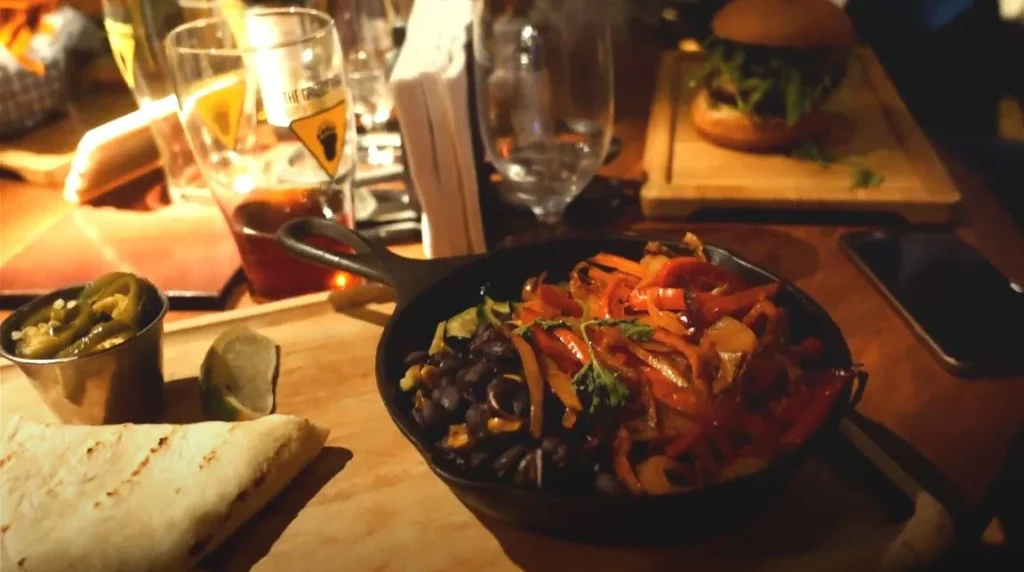
I found this incredible restaurant where I indulged in what can only be described as a feast for the senses. The ambiance was perfect – warm lighting, great company and food that made me forget about jet lag entirely. I ordered locally-sourced dishes that showcased Alberta’s rich agricultural heritage, paired with wines that complemented every bite. The fajitas were sizzling, aromatic and absolutely delicious, served with all the fixings that made each bite customizable to my taste.
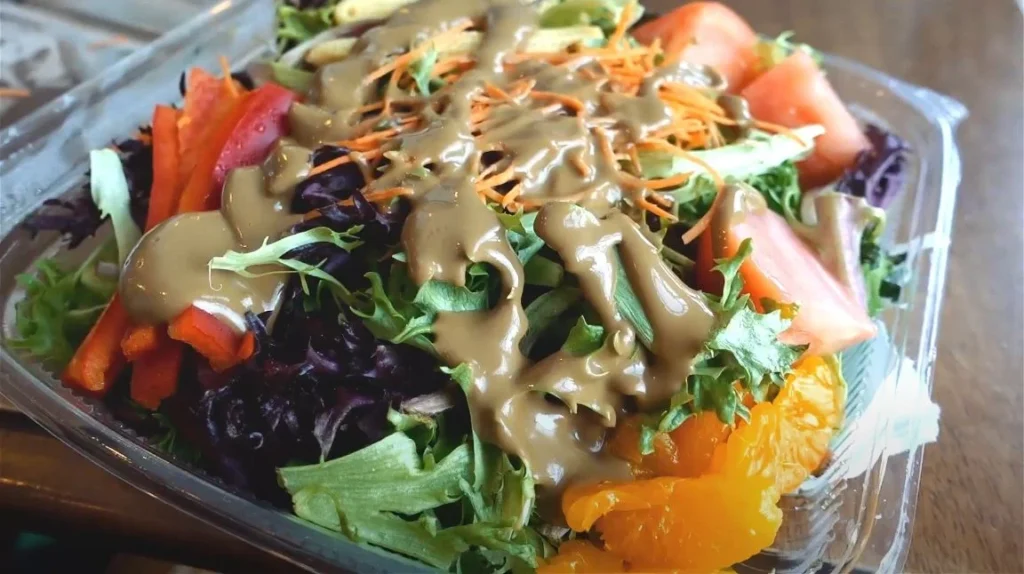
The next day, I made sure to start healthy (I knew I’d need the energy for skiing!). This vibrant salad bowl was almost too beautiful to eat – fresh greens, crispy vegetables, perfectly poached eggs and a tahini dressing that tied everything together. It’s these little moments, these culinary discoveries, that make travel so enriching.
Hitting the Highway: The Drive to the Rockies
After two days of exploring Calgary’s urban offerings and sampling the nightlife (more on that later), it was time for the main event. The drive from Calgary to the mountain resorts is legendary among travelers and I was about to understand why.
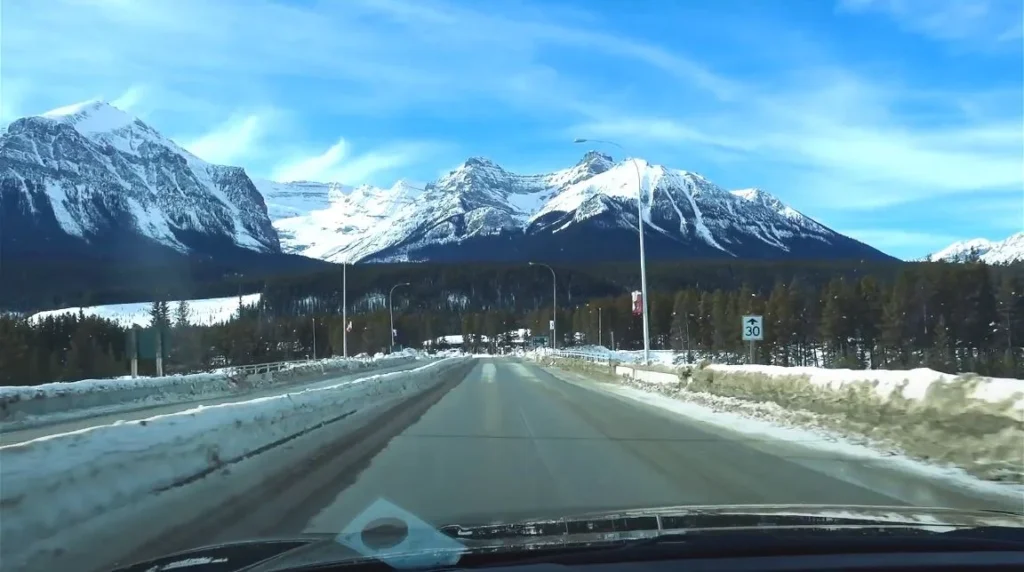
The Trans-Canada Highway westbound is not just a road; it’s a cinematic experience. As I drove, the landscape transformed before my eyes. The flat prairies gradually gave way to rolling foothills, which then erupted into the majestic Rocky Mountains. Every turn revealed a new postcard-worthy vista. Snow-capped peaks pierced the brilliant blue sky and I found myself pulling over multiple times just to take it all in.
The journey took roughly 90 minutes, but it felt both longer and shorter – longer because I wanted to stop at every viewpoint, shorter because the scenery made time irrelevant.
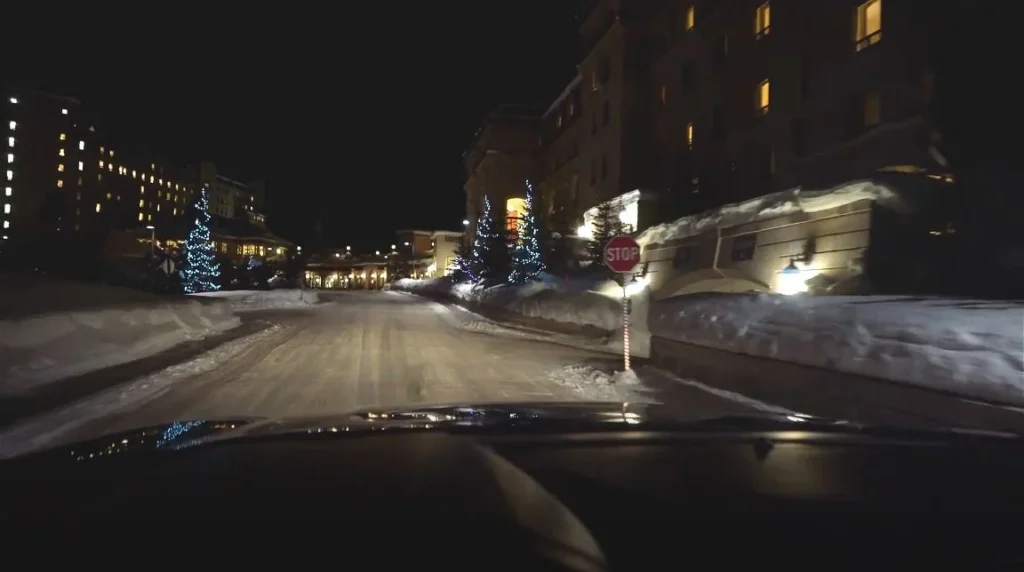
One evening, driving back after a full day on the slopes, I experienced the mountains in a different light – literally. The resort villages were illuminated with warm lights, Christmas decorations twinkled against the snow and the mountains loomed as dark silhouettes against the night sky. There was something magical about navigating these snowy roads at night, the heated car creating a cozy bubble as the winter landscape passed by outside.
Important Driving Tips for Winter Mountain Roads
Before I dive into the skiing, let me share some crucial advice for anyone planning to drive in the Canadian Rockies during winter:
Essential Preparations:
- Rent a vehicle with proper winter tires (not all-season – actual winter tires).
- Keep an emergency kit in your car (blankets, flashlight, snacks, water).
- Check road conditions before every drive (Alberta 511 is your friend).
- Fill up your gas tank frequently – stations can be far apart.
- Allow extra time for your journey – winter driving is slower.
Driving Best Practices:
- Accelerate and brake gently on icy roads.
- Increase following distance significantly.
- If you encounter wildlife, slow down gradually – don’t swerve.
- Keep your headlights on at all times.
- Watch for black ice, especially on bridges and shaded areas.
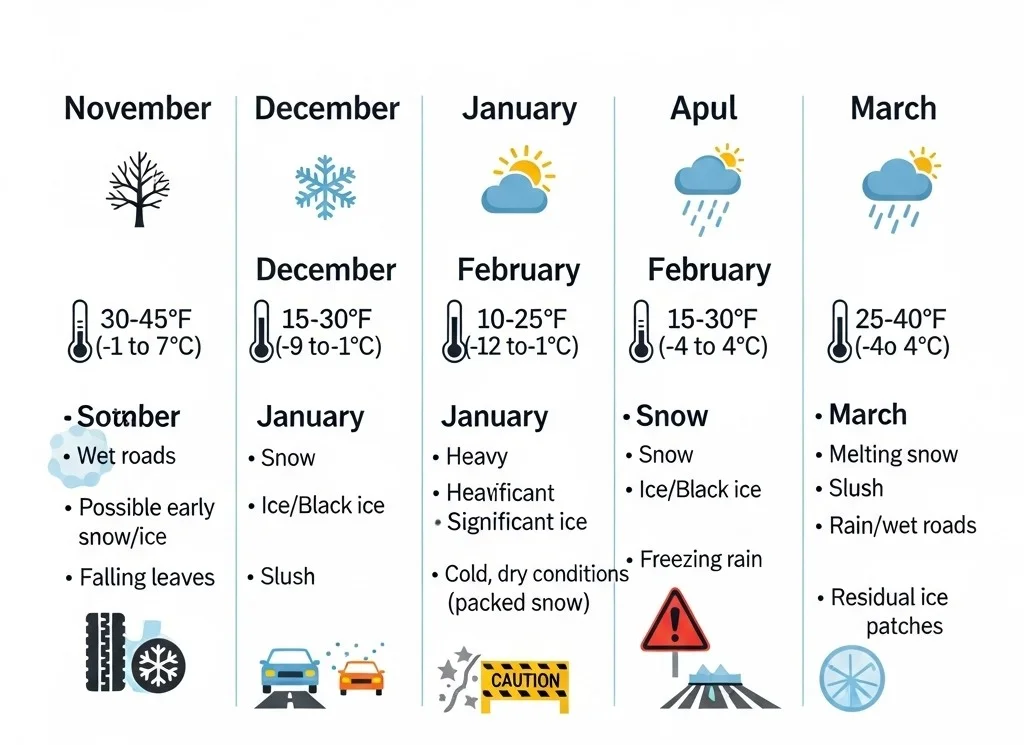
The Main Event: Alberta’s Best Skiing Destinations
Now, let’s get to what you’re really here for – the skiing. Alberta is home to some of North America’s finest ski resorts and I made it my mission to experience as many as possible. Each resort has it’s own personality, it’s own charm and it’s own unique offerings.
Lake Louise Ski Resort: Where Dreams Are Made of Powder
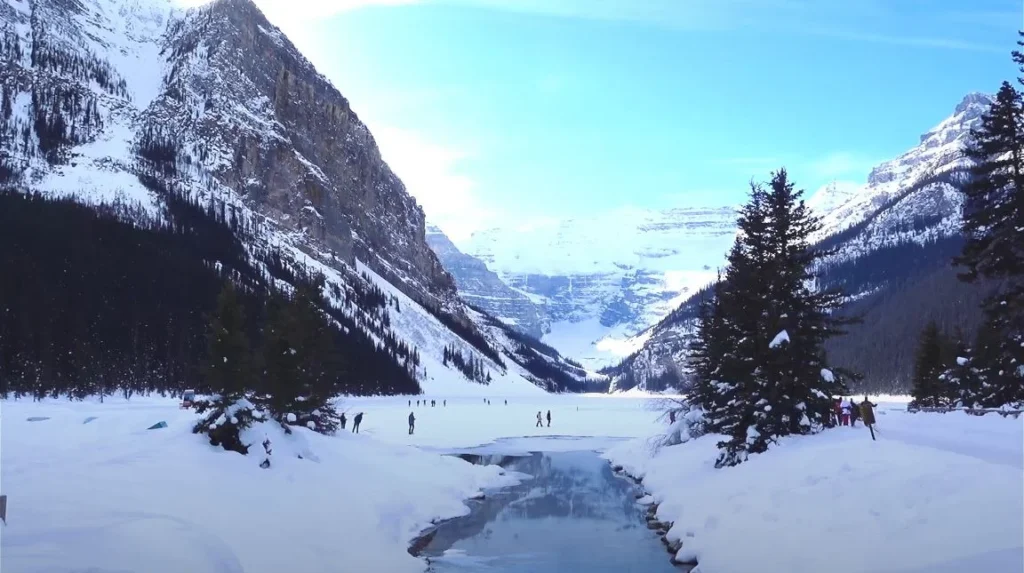
If I had to choose one place that captured the essence of Alberta skiing, it would be Lake Louise. This isn’t just a ski resort; it’s a spiritual experience. Located in Banff National Park, Lake Louise offers over 4,200 acres of skiable terrain with breathtaking views that make you forget you’re supposed to be skiing.
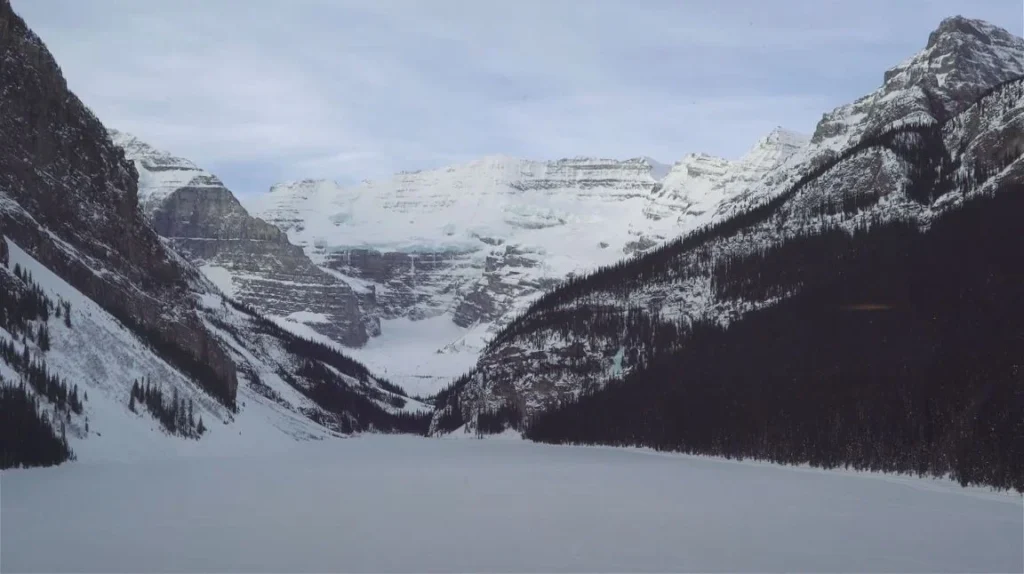
The mountain itself is imposing and inviting all at once. With a vertical drop of 991 meters (3,250 feet), it caters to everyone from nervous beginners to adrenaline-junkie experts. I spent three full days here and I still felt like I barely scratched the surface.
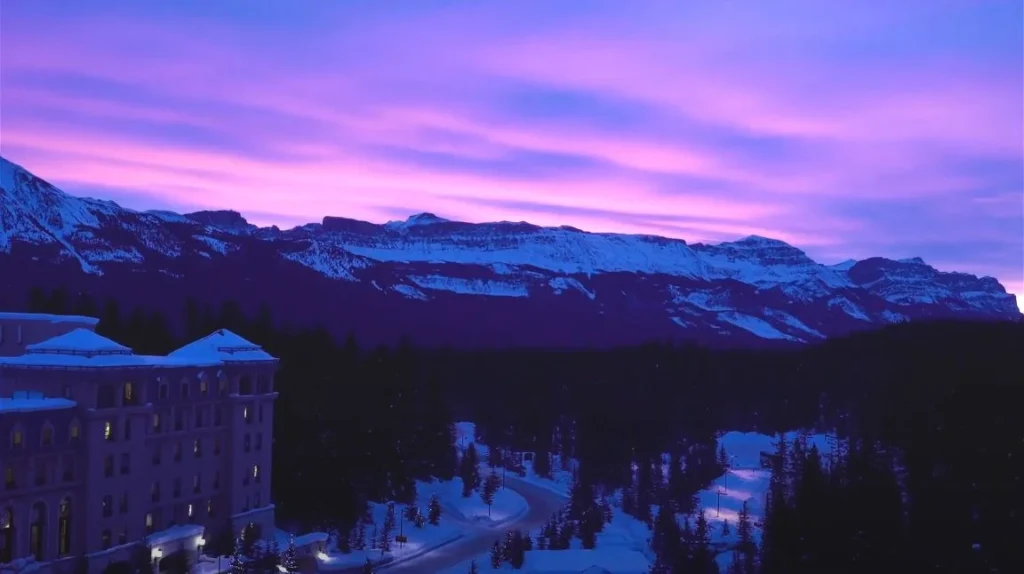
There’s something profound about standing at the top of a run, surrounded by fellow adventurers, with the vast expanse of the Canadian Rockies stretching endlessly in every direction. The snow conditions were impeccable during my visit – that light, dry powder that Canadians call “champagne snow.” It’s called that for a reason; skiing through it feels like floating on air.
Why Lake Louise Stands Out:
- Terrain Variety:
- 25% beginner terrain.
- 45% intermediate terrain.
- 30% advanced/expert terrain.
- Something for literally everyone.
- The Views:
- Unobstructed panoramas of the Continental Divide.
- Victoria Glacier visible from multiple runs.
- Photo opportunities on every chairlift.
- Snow Quality:
- Average annual snowfall: 169 inches.
- High elevation means cold temperatures and dry snow.
- Consistent conditions throughout the season.
- Dining Options:
- Multiple on-mountain lodges.
- Whiskey Jack Lodge at mid-mountain (my favorite lunch spot).
- Temple Lodge for fine dining with a view.
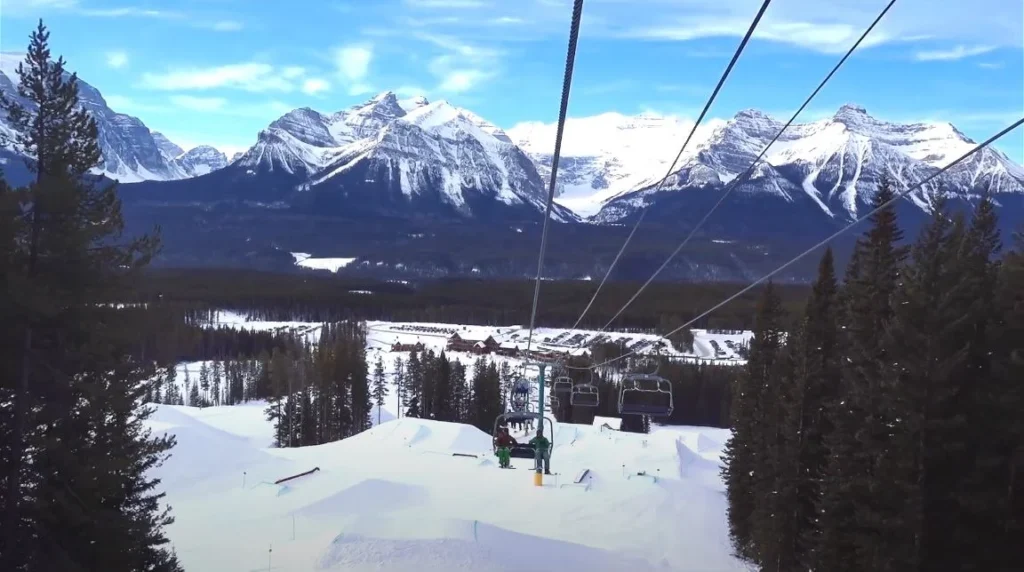
Taking the chairlift up was an experience in itself. Unlike some resorts where you’re eager to reach the top and get skiing, here I found myself wishing the ride would last longer. The ascent provided ever-changing perspectives of the landscape and on clear days, you could see for what felt like hundreds of miles.
The Frozen Lake Experience: More Than Just Skiing
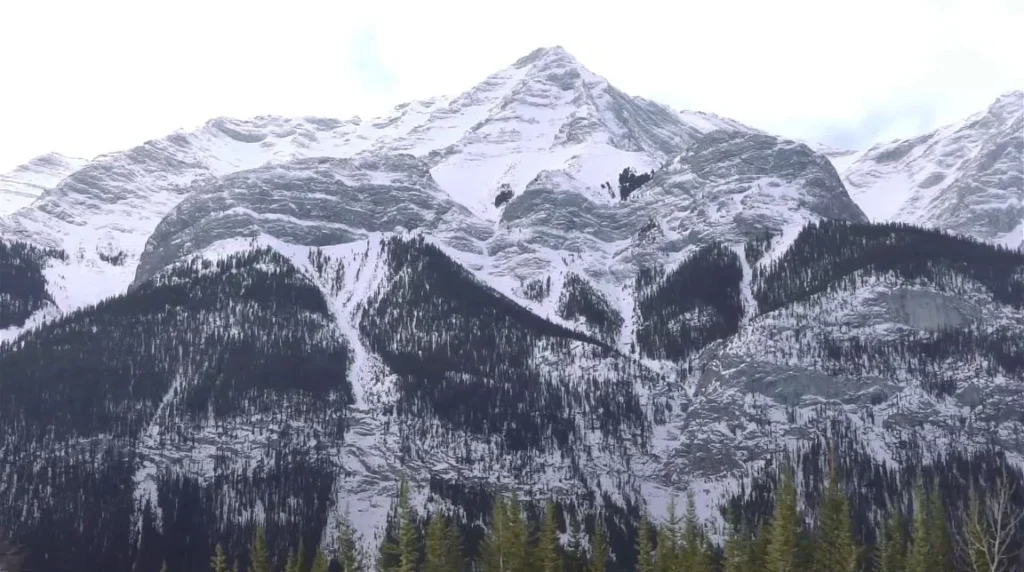
One of the most unexpected highlights of my trip was spending time on the frozen Lake Louise itself. This isn’t just a tourist gimmick – it’s a genuine Canadian winter experience. I watched locals and tourists alike lacing up their skates and playing pickup hockey games with the mountains as their backdrop. I even joined in for a game, despite my mediocre hockey skills. There’s something deeply Canadian about playing hockey on a frozen mountain lake and I loved every minute of it.
The ice was thick enough to support not just skaters but also ice sculptors, photographers and even small events. Walking on this massive frozen surface, hearing the ice creak and groan beneath me (totally normal and safe, I was assured), was both thrilling and slightly terrifying.
Exploring More Mountain Magic: Beyond Lake Louise
While Lake Louise captured my heart, I’d be doing Alberta a disservice if I didn’t explore it’s other world-class skiing destinations. Each resort I visited had it’s own unique character and together they painted a complete picture of why Alberta is considered one of the premier winter sports destinations in the world.
Sunshine Village: Living Up to It’s Name
After my Lake Louise adventure, I headed to Sunshine Village and the name couldn’t be more appropriate. Perched at 7,200 feet above sea level, this resort boasts Canada’s highest base elevation, which means incredible snow conditions and, yes, more sunny days than you’d expect in the mountains.
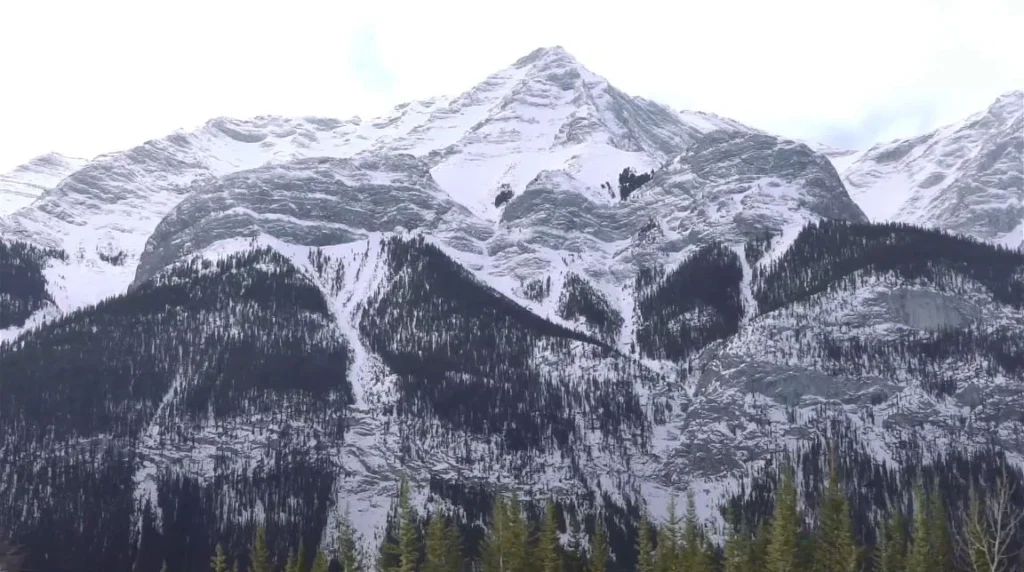
What sets Sunshine Village apart is it’s unique location straddling the Continental Divide. Technically, you can ski in both Alberta and British Columbia in a single run – how cool is that? The resort has over 3,300 acres of skiable terrain spread across three mountains: Lookout Mountain, Standish and Goat’s Eye Mountain.
My Sunshine Village Experience:
The day I visited, the weather was absolutely perfect. Bluebird skies, fresh powder from the night before and temperatures that were cold enough to keep the snow perfect but warm enough to ski comfortably. I started my day on Lookout Mountain, where the intermediate runs allowed me to warm up and get my ski legs under me.
Standout Features of Sunshine Village:
- Delirium Dive: For the truly adventurous (which I am NOT, despite what my Instagram might suggest), this double-black-diamond terrain requires avalanche gear and takes you into extreme skiing territory.
- The Standish Chair: Accesses some of the best intermediate terrain I’ve ever skied.
- Goat’s Eye Mountain: Offers advanced terrain with stunning alpine bowls.
- Extended Season: Thanks to high elevation, Sunshine often operates from November through May.
Terrain Breakdown:
- Beginner: 20%
- Intermediate: 55%
- Advanced: 25%
- Total Skiable Area: 3,358 acres
| Feature | Lake Louise | Sunshine Village |
| Elevation (base) | 5,400 ft | 7,200 ft |
| Vertical Drop | 3,250 ft | 3,514 ft |
| Skiable Acres | 4,200 | 3,358 |
| Annual Snowfall | 169 inches | 180 inches |
| Best For | All levels, views | Intermediates, long season |
| Crowd Level | Moderate-High | Moderate |
| Unique Feature | Victoria Glacier views | Continental Divide location |
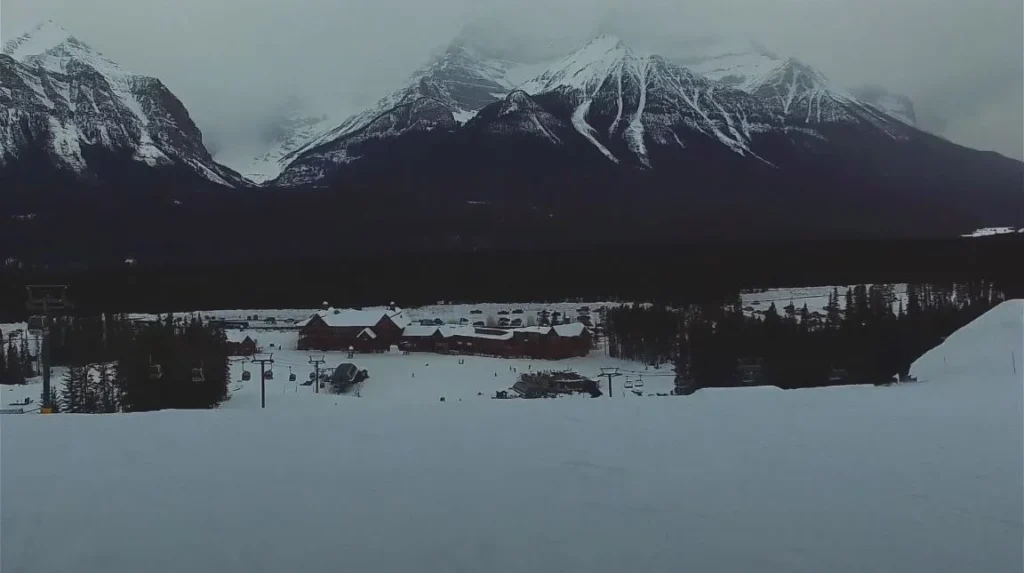
One of my favorite moments at Sunshine was taking a mid-morning break at the Sunshine Mountain Lodge. This is one of the few ski-in/ski-out hotels in Canada and even if you’re not staying there, you can enjoy their facilities. I grabbed a hot chocolate, sat on their deck and just absorbed the 360-degree mountain views. It’s moments like these – when you’re not rushing from run to run – that you really appreciate where you are.
Mount Norquay: The Local’s Secret
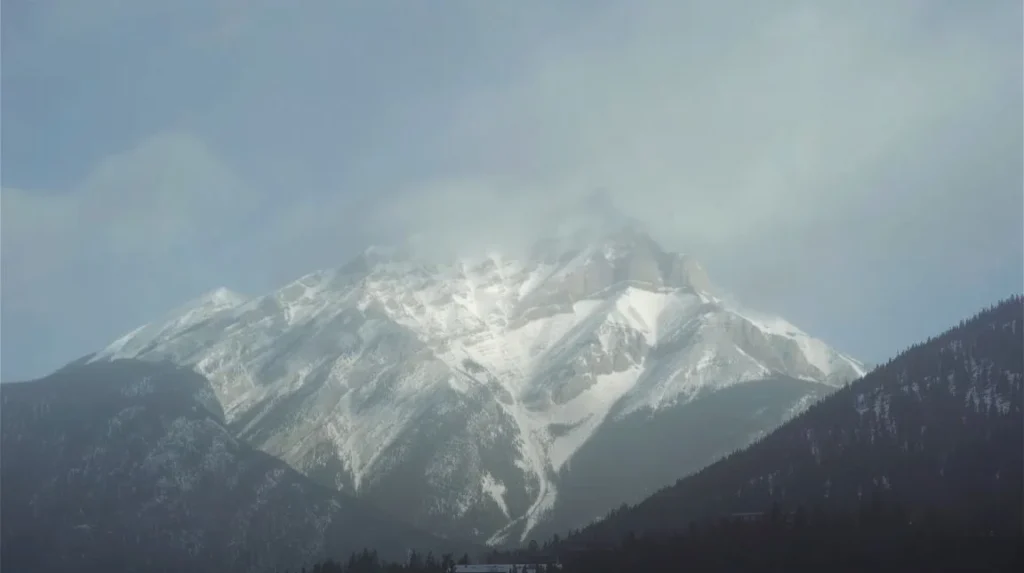
My third stop was Mount Norquay, often overlooked by tourists but beloved by locals. This smaller resort (by Alberta standards) is just minutes from Banff and offers a more intimate skiing experience. With only 190 acres of skiable terrain, you might think it’s not worth visiting, but you’d be wrong.
Why I Loved Norquay:
1. No Crowds: While Lake Louise and Sunshine can get busy, Norquay felt like my private ski hill. I could do multiple runs without waiting in long lift lines.
2. Night Skiing: Norquay offers night skiing on select runs and let me tell you, carving down a lit slope with the stars overhead is pure magic.
3. Tube Park: When my legs needed a break from skiing, I spent an hour at the tube park. Yes, I’m an adult. No, I don’t care. Tubing down those massive snow lanes was ridiculously fun.
4. The North American Chair: This steep, old-school double chair takes you to Norquay’s most challenging terrain. It’s not for the faint of heart, but the bragging rights are worth it.
5. Proximity to Banff: Being so close to town meant I could easily head down for lunch or dinner without losing half a day to driving.
Terrain Distribution:
- Beginner: 15%
- Intermediate: 34%
- Expert: 51%
Yes, you read that right – over half the mountain is expert terrain. This is where advanced skiers come to push themselves without battling crowds.
Canmore & Banff: Mountain Towns with Soul
Between all this skiing, I needed to rest, recover and explore the communities that make this region special. Canmore and Banff became my home bases and each offered something unique.
Canmore: Where Locals Live
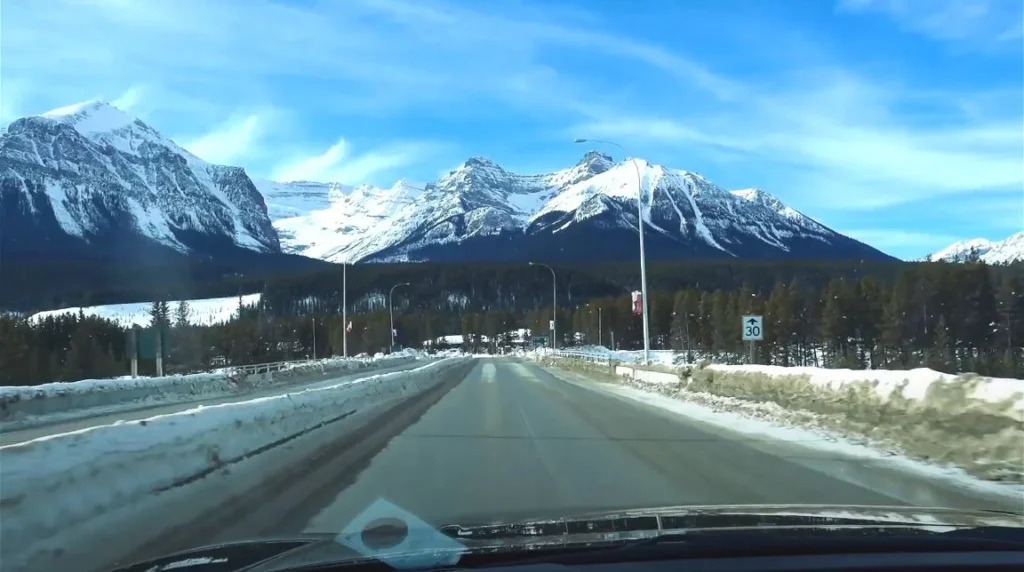
Canmore captured my heart immediately. This town has managed something remarkable – it’s remained authentic despite the tourist influx. Former Olympic venues from the 1988 Calgary Winter Olympics dot the landscape, giving the town a legitimate athletic pedigree.
I stayed in Canmore for four nights and each day revealed something new:
Day 1: Explored the historic downtown core, with it’s independent coffee shops and locally-owned restaurants. The mountain views from Main Street are absurd – you’re literally eating lunch with the Three Sisters peaks staring at you.
Day 2: Hiked (yes, in winter gear) the Grassi Lakes trail. Even partially frozen, the emerald-colored lakes were stunning. The trail was well-maintained despite snow coverage and I met several locals who do this hike year-round.
Day 3: Discovered the Canmore Nordic Centre, the cross-country skiing venue from the Olympics. I’m not a cross-country skier, but I tried snowshoeing through the trails and worked muscles I didn’t know I had.
Day 4: Simply wandered, popped into art galleries, chatted with shop owners and absorbed the mountain town vibe.
Why Choose Canmore Over Banff?
Both towns are incredible, but they serve different purposes:
Canmore Advantages:
- Less touristy, more authentic feel
- Lower accommodation costs
- Better restaurant value
- Less crowded
- Preferred by locals
- Easier parking
- More residential, community-oriented
Banff Advantages:
- More accommodation options
- Livelier nightlife
- More shopping variety
- Better public transportation
- More iconic landmarks
- Greater restaurant diversity
- Located within National Park
Banff: The Crown Jewel
I spent equal time in Banff and there’s no denying it’s appeal. Yes, it’s touristy. Yes, Banff Avenue can feel crowded. But there’s a reason millions of people visit this town annually – it’s spectacular.
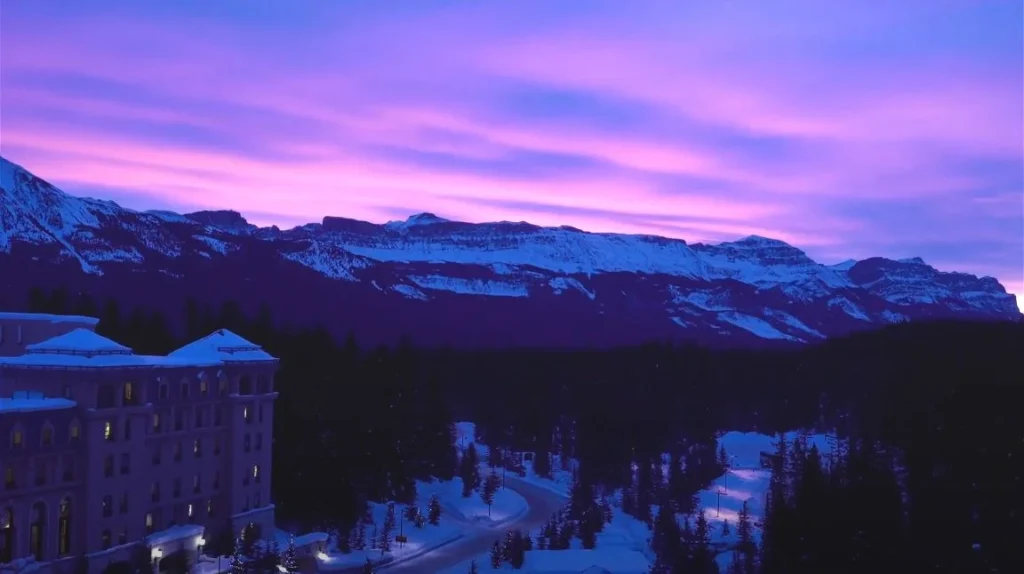
The resort architecture in and around Banff is stunning. The famous castle-like hotels aren’t just places to sleep; they’re destinations in themselves. Even if you’re not staying at the Fairmont properties, I highly recommend visiting their lobbies and public spaces. The historic grandeur combined with modern luxury creates an atmosphere that’s both elegant and welcoming.
My Banff Must-Dos:
1. Banff Avenue Walk: Despite the tourist crowds, strolling the main street is essential. The mountain backdrop makes even window shopping feel special.
2. Banff Upper Hot Springs: After days of skiing, soaking in these natural hot springs was therapeutic. Swimming in 40°C (104°F) water while surrounded by snow-covered mountains? Surreal.
3. Wildlife Watching: I saw elk wandering through town like they owned the place (they kind of do). Respect their space, but enjoy the show.
4. The Whyte Museum: Learned about the Indigenous peoples of the region and the history of mountaineering in the Rockies. It provided important context for understanding this land.
5. Local Breweries: Yes, even in winter, brewery hopping is fun. The craft beer scene here is excellent.
The Food Scene: More Than Poutine and Maple Syrup
Let’s talk about food, because Alberta’s culinary scene deserves serious recognition. I’ve traveled extensively and I can confidently say that the food in this region rivals anywhere I’ve been.
BeaverTails: A Canadian Institution
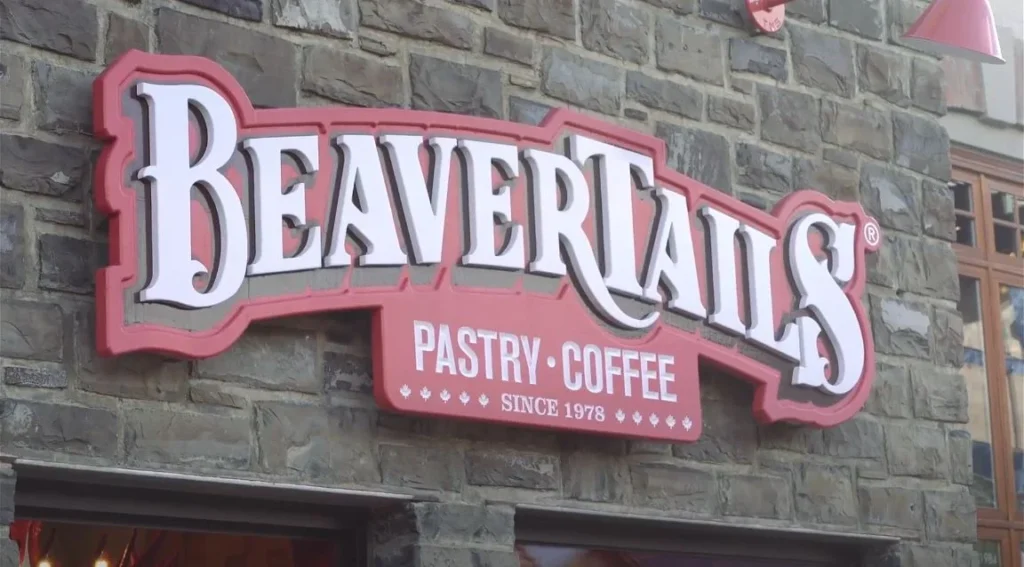
You can’t visit Canada without trying BeaverTails and discovering this pastry shop in Banff was a highlight. For the uninitiated, BeaverTails are hand-stretched pastries shaped like (you guessed it) beaver tails, fried to golden perfection and topped with various sweet combinations.
I tried three variations:
1. Classic Cinnamon & Sugar: Simple, perfect, nostalgic. The pastry was crispy on the edges, soft in the middle and the cinnamon-sugar combination was just right – sweet but not overwhelming.
2. Maple Fever: Because you’re in Canada, so why not? Real maple syrup drizzled over the pastry, creating pockets of intense maple flavor. Rich, very sweet, absolutely delicious.
3. Killaloe Sunrise: Cinnamon, sugar and a generous squeeze of lemon juice. The citrus cuts through the sweetness perfectly, creating a balanced flavor profile that had me going back for more.
Pro Tip: Get your BeaverTail fresh and hot. They’re good cold, but fresh off the fryer is transformative. Also, don’t be embarrassed when you inevitably get cinnamon-sugar all over your face and jacket. It’s part of the experience.
The coffee at BeaverTails was also surprisingly good – strong, hot and exactly what you need when you’re walking around in -15°C weather.
Beyond BeaverTails: Alberta’s Culinary Excellence
The restaurant scene in Alberta exceeded all my expectations. Here’s a truth about mountain towns: many have mediocre food that trades on location rather than quality. Not here.
Farm-to-Table Philosophy: Alberta’s restaurants take local sourcing seriously. Many meals began with the server explaining which ranch the beef came from or which farm supplied the vegetables. This wasn’t pretentious – it was genuine pride in local products.
Alberta Beef: I’d heard about Alberta beef’s reputation and it’s deserved. The cattle are grain-fed, resulting in incredibly marbled, flavorful meat. Every steak I had was outstanding.
Wild Game: I tried elk, bison and wild boar during my stay. These weren’t novelty items; they were thoughtfully prepared proteins that showcased the region’s culinary heritage.
Vegetarian/Vegan Options: Despite the beef culture, I was impressed by the vegetarian and vegan offerings. Mountain towns attract health-conscious crowds and restaurants have adapted accordingly.
My Top Dining Experiences:
High-End Dining:
- Splurged one night on a tasting menu that included seared elk tenderloin, wild mushroom risotto and a dessert featuring Saskatoon berries (a local fruit I’d never heard of but now dream about).
- The wine pairing introduced me to Canadian wines that competed favorably with international selections.
Casual Excellence:
- Found a hole-in-the-wall ramen shop in Canmore that served steaming bowls of comfort after cold days on the slopes.
- Pizza place with wood-fired ovens and creative topping combinations that actually worked.
Breakfast Culture:
- Canadians take breakfast seriously and I benefited from this.
- Pancakes, real maple syrup, quality bacon and strong coffee became my pre-ski ritual.
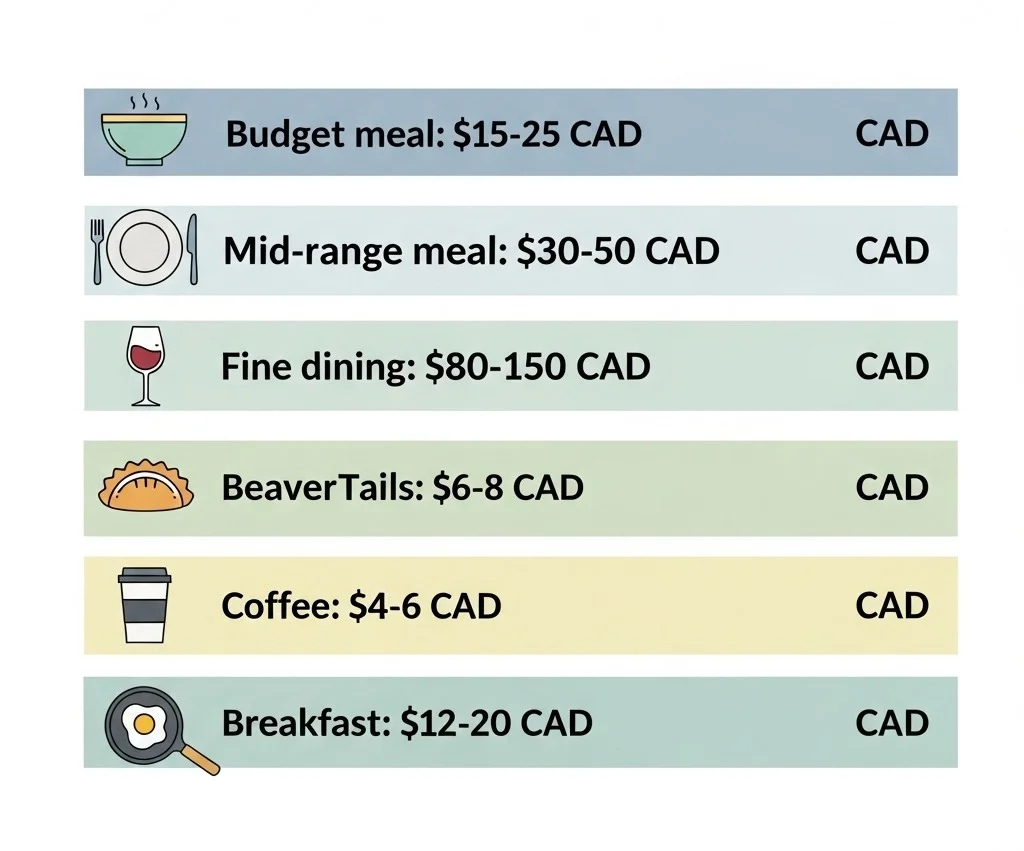
Nightlife and Culture: After the Lifts Close
Skiing dominated my days, but the nights revealed another side of Alberta’s mountain culture.
The 403 DNB Experience
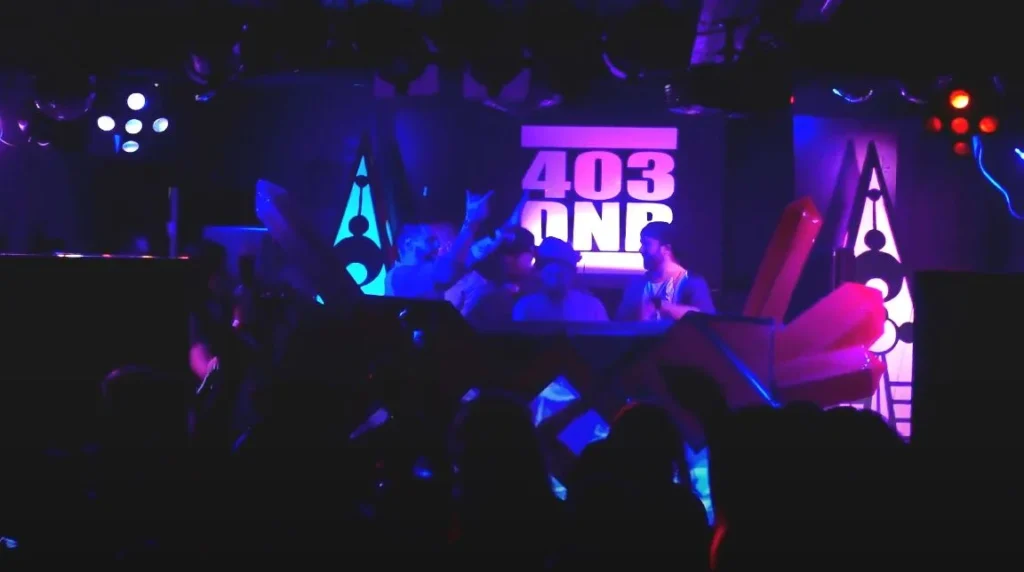
I’m not typically a nightclub person – I’m usually in bed by 10 PM when I’m on ski trips. But on my second-to-last night, I heard about a drum and bass event at a venue called 403 DNB and something compelled me to go.
The energy was incredible. This wasn’t some tourist trap playing generic music; this was a proper music scene with local DJs, visiting artists and a crowd that genuinely loved the music. The venue had a raw, underground vibe – dramatic lighting, powerful sound system and enough room to actually move and dance.
What struck me most was the diversity of the crowd. Locals, tourists, ski instructors, restaurant workers and travelers from around the world all came together under those lights. I met a group of Australian ski bums, a couple from Japan celebrating their honeymoon and a retired professional skier who told stories that should probably be written down somewhere.
The Alberta Nightlife Spectrum:
Dive Bars: Authentic, unpretentious spots where ski instructors drink alongside millionaire tourists. Everyone’s equal when you’re tired from skiing.
Lounges: Upscale cocktail bars serving creative drinks with mountain views (even at night, somehow those mountains command attention).
Live Music Venues: Everything from folk singer-songwriters to rock bands to electronic acts. The music scene is more vibrant than you’d expect.
Sports Bars: For watching hockey, obviously. Being in Canada during hockey season is an experience – the passion is real.
Clubs: Like the 403 DNB experience, proper nightlife for those who want to dance until 2 AM.
Cultural Experiences Beyond Partying
Not every evening was spent in bars and clubs. Some of my favorite memories came from quieter cultural experiences:
Indigenous Cultural Programs: Attended a presentation about the Stoney Nakoda Nation and their historical connection to these lands. It provided important perspective and context that every visitor should seek out.
Stargazing: The light pollution is minimal in the mountains. One clear night, I simply stood outside my accommodation and stared at the Milky Way. You forget what the night sky actually looks like until you see it away from cities.
Public Art: Both Banff and Canmore have invested in public art installations. Walking tours (self-guided) reveal sculptures, murals and installations that reflect the region’s character.
Film Screenings: Caught a mountaineering documentary at a local cinema. Watching films about mountain adventures while actually in the mountains hits differently.
Practical Planning: Making Your Alberta Ski Trip a Reality
After experiencing all this firsthand, I want to help you plan your own adventure. Here’s everything you need to know, broken down into actionable advice.
When to Visit: Timing Your Trip
Alberta’s ski season generally runs from early November through mid-May, but not all times are created equal.
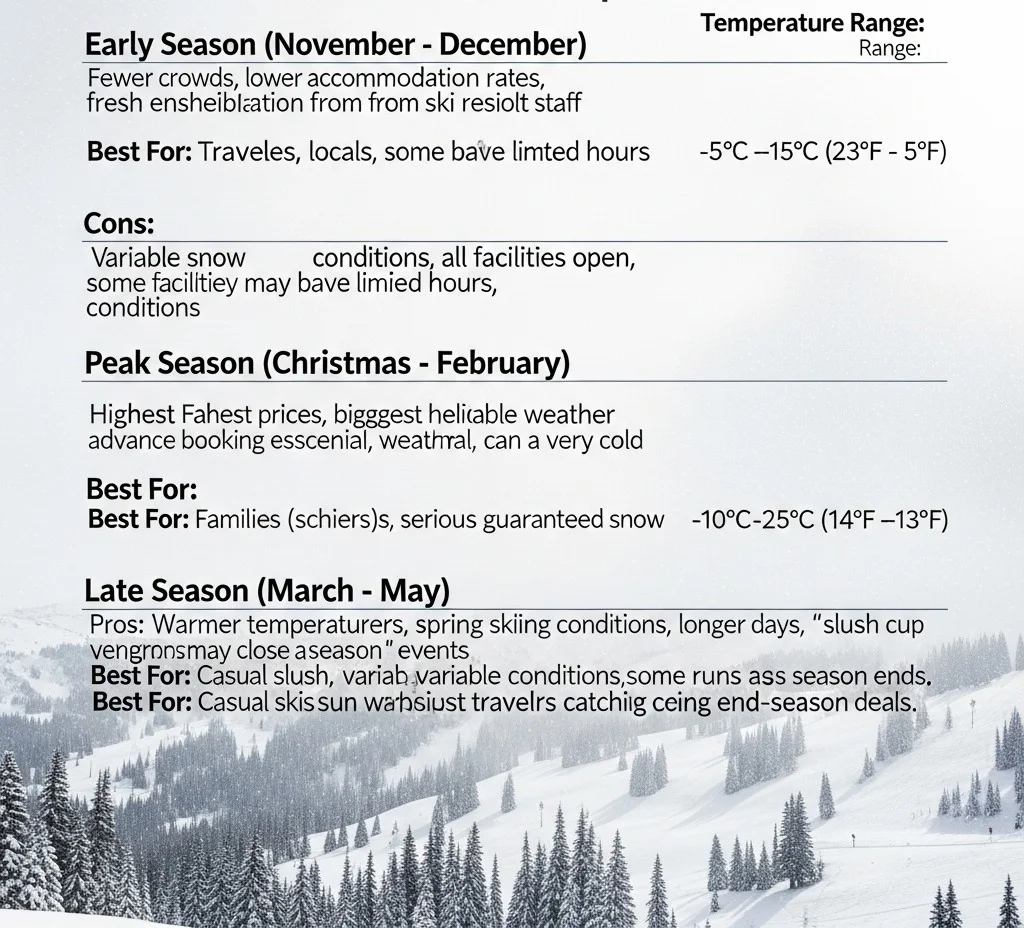
Early Season (November – December):
- Pros: Fewer crowds, lower accommodation rates, fresh enthusiasm from ski resort staff.
- Cons: Variable snow conditions, shorter days, some facilities may have limited hours.
- Best For: Budget travelers, locals, those who don’t mind variable conditions.
- Temperature Range: -5°C to -15°C (23°F to 5°F).
Peak Season (Christmas – February):
- Pros: Best snow conditions, all facilities open, lively atmosphere, reliable weather.
- Cons: Highest prices, biggest crowds, advance booking essential, can be very cold.
- Best For: Families (school holidays), serious skiers, those wanting guaranteed snow.
- Temperature Range: -10°C to -25°C (14°F to -13°F).
Late Season (March – May):
- Pros: Warmer temperatures, spring skiing conditions, longer days, “slush cup” events.
- Cons: Afternoon slush, variable conditions, some runs may close as season ends.
- Best For: Casual skiers, sun worshippers, budget travelers catching end-season deals.
- Temperature Range: -5°C to +5°C (23°F to 41°F).
My Recommendation: If you can be flexible, aim for January or February. Yes, it’s cold. Yes, it’s expensive. But the snow quality and mountain experience are unmatched. If you’re budget-conscious, early December or late March offer excellent value with acceptable trade-offs.
Budget Breakdown: What Will This Actually Cost?
Let’s talk money. Alberta isn’t the cheapest ski destination, but it’s not the most expensive either. Here’s what I spent (all amounts in CAD):
Accommodation (per night):
- Budget hostel/Airbnb: $50-100
- Mid-range hotel: $150-250
- Luxury resort: $400-800+
- I spent: Roughly $180/night averaging between Canmore hotels and one splurge night at a resort
Lift Tickets (per day):
- Lake Louise: $129-159
- Sunshine Village: $129-159
- Mount Norquay: $99-129
- Pro tip: Multi-day passes and early booking discounts can save 20-30%
Food (per day):
- Breakfast: $15-20
- Lunch (on mountain): $18-25
- Dinner: $30-80
- Snacks/coffee: $10-15
- My average: About $85/day, though I had splurge and budget days
Transportation:
- Car rental (per day): $40-80
- Gas: $15-20/day
- Parking at resorts: $15-25
- Alternative: Banff/Lake Louise shuttle service ($10-15 one-way)
Gear Rental (if needed):
- Full ski package: $50-75/day
- Helmet: $15/day
- Goggles: $15/day
- Money-saving tip: Rent in Canmore instead of resort villages for better rates
Activities Beyond Skiing:
- Banff Upper Hot Springs: $10
- Museum entry: $10-15
- Snowshoeing rental: $25/day
- Ice skating on Lake Louise: Free!
Miscellaneous:
- Souvenirs: $50-100
- Emergency purchases (forgot gloves, etc.): $30-50
My Total for 10 Days: Approximately $3,200 CAD (roughly $2,350 USD at current exchange rates)
This included 7 days of skiing, mix of accommodation types, several nice dinners, one night of nightlife, car rental and various activities. You could do it for less (around $2,000 CAD) by staying in hostels, cooking some meals and limiting ski days. Or you could easily spend $5,000+ by staying at premium properties and skiing every day with top-tier equipment.
Essential Packing List: Don’t Leave Home Without These
I learned some things the hard way. Here’s what you actually need:
Clothing Layers (Critical):
- Base layers (merino wool, not cotton).
- Mid-layers (fleece or light down).
- Outer shell (waterproof, windproof).
- Ski pants (insulated or shell with layers beneath).
- Warm socks (multiple pairs).
- Neck warmer/buff.
- Warm hat that fits under helmet.
- Gloves (plus backup pair – I lost one glove day 3).
- Warm jacket for evenings in town.
Ski Equipment:
- Goggles with spare lens (conditions change).
- Sunglasses (spring skiing).
- Sunscreen (SPF 50+ – mountain sun is intense).
- Lip balm with SPF.
- Hand warmers (lifesaver on cold days).
- Boot warmer bags (luxury, but worth it).
Technology:
- Phone with offline maps downloaded.
- Portable charger (cold drains batteries fast).
- GoPro or action camera (optional but you’ll want photos).
- Headlamp (if you’re out after dark).
Personal Items:
- Moisturizer (dry mountain air is brutal on skin).
- First aid kit basics.
- Any medications you need.
- Reusable water bottle.
Documents:
- Passport (obviously).
- Driver’s license (international permit if from certain countries).
- Travel insurance documents.
- Booking confirmations.
- Emergency contact information.
What I Wish I’d Brought:
- Better waterproof gloves (mine soaked through).
- More base layer options (I wore the same ones too many days).
- Smaller daypack for town exploration.
- Better camera (my phone did okay, but a real camera would have been worth it).
Safety First: Staying Smart in the Mountains
Before I share more about the magical experiences, I need to talk about something serious: mountain safety. The Canadian Rockies are stunning, but they demand respect. During my trip, I witnessed a few close calls that could have been avoided with proper preparation and awareness.
Avalanche Awareness
This is non-negotiable. Even if you’re staying on marked resort runs, understanding avalanche basics is crucial. Here’s what I learned:
Avalanche Safety Essentials:
Resort Skiing: All the major resorts have professional avalanche control teams who monitor conditions and trigger controlled avalanches before opening runs. This means resort skiing is generally very safe, but you must:
- Never duck ropes or ski closed areas.
- Pay attention to avalanche warning signs.
- Understand the flag system (Green = Low, Yellow = Moderate, Red = High, Black = Extreme).
Backcountry Skiing: If you venture beyond resort boundaries (which I didn’t and if you’re a beginner, you shouldn’t either), you MUST have:
- Avalanche beacon, probe and shovel.
- Knowledge of how to use them.
- Avalanche safety training.
- A partner (never go alone).
- Current avalanche forecast knowledge.
During my stay, I took a free avalanche awareness presentation offered at the resort. It was eye-opening and potentially life-saving information presented in an accessible way.
Wildlife Encounters
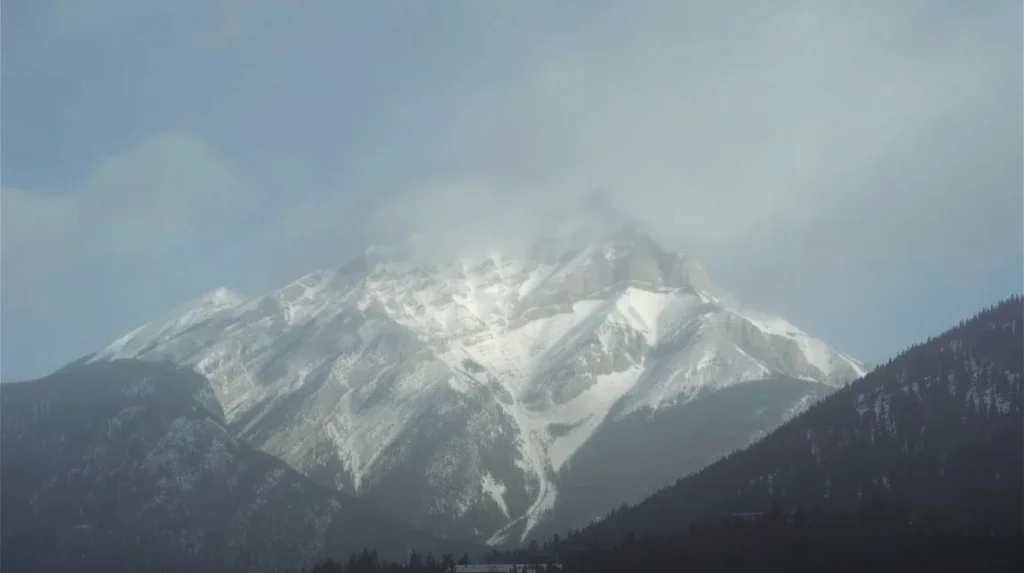
These mountains are home to some of North America’s most impressive wildlife: grizzly bears, black bears, elk, moose, mountain lions and wolves. While winter means many animals are hibernating or less active, encounters still happen.
My Wildlife Encounters:
Elk in Banff: As I mentioned, elk wander through Banff like they’re locals (they are). I saw several up close – too close, actually. Park regulations require staying at least 30 meters (100 feet) away, but tourists constantly ignore this. I watched one aggressive elk charge at someone who got too close for photos. Fortunately, no one was hurt, but it was a stark reminder.
Bighorn Sheep: On the highway, I encountered a group of bighorn sheep. They literally own the road when they want to cross. I stopped, kept my distance and enjoyed the show. They’re magnificent animals with those impressive curved horns.
Important Wildlife Rules:
- Keep all food locked in your vehicle.
- Never approach wildlife for photos.
- If an animal changes it’s behavior because of you, you’re too close.
- Bears: Make noise while hiking, carry bear spray, know how to use it.
- Report aggressive animal behavior to park officials.
Weather Considerations
Mountain weather is unpredictable and can change dramatically within hours. Here’s what I experienced:
Temperature Fluctuations: One day started at -20°C (-4°F) at 8 AM, warmed to -5°C (23°F) by noon, then dropped back to -18°C (-0.4°F) by 4 PM. Layering isn’t optional; it’s survival.
Whiteout Conditions: On day five, visibility dropped to nearly zero. I couldn’t see the chair lift ten feet away. The resort closed upper mountain runs and I spent the afternoon in the base area lodge. Don’t be a hero – if conditions are bad, take the day off.
Frostbite Risk: I got minor frostbite on my nose (it healed fine). I thought I was being careful, but even fifteen minutes of exposed skin in -25°C with windchill can cause damage. Cover everything.
Wind Chill: The wind at elevation is no joke. Temperatures might show -15°C, but with wind chill, it feels like -30°C. Check weather reports, not just temperature.
Weather Safety Tips:
- Check forecasts every morning.
- Listen to resort staff recommendations.
- Have backup plans for bad weather days.
- Download weather apps before you go.
- Watch for signs of frostbite: numbness, white/gray skin, unusually firm skin.
Altitude Considerations
Most of these resorts sit between 5,400 and 7,200 feet above sea level. If you’re coming from sea level (like I was from London), you might experience:
Symptoms I Noticed:
- Shortness of breath on first day.
- Mild headache in evenings.
- Dehydration (more frequent than expected).
- Fatigue setting in earlier than usual.
Managing Altitude:
- Hydrate constantly (I aimed for 3+ liters daily).
- Avoid alcohol the first day or two.
- Take it easy your first day – don’t overdo it.
- Eat carbohydrate-rich foods.
- Monitor for severe symptoms (severe headache, nausea, confusion – get medical help).
By day three, my body had adjusted and I felt normal again. Just be patient with yourself.
The Learning Curve: Experiences by Skill Level
One question I get asked constantly is: “Can beginners enjoy Alberta skiing?” The answer is absolutely yes, but the experience differs significantly based on skill level. Let me break this down:
For Complete Beginners
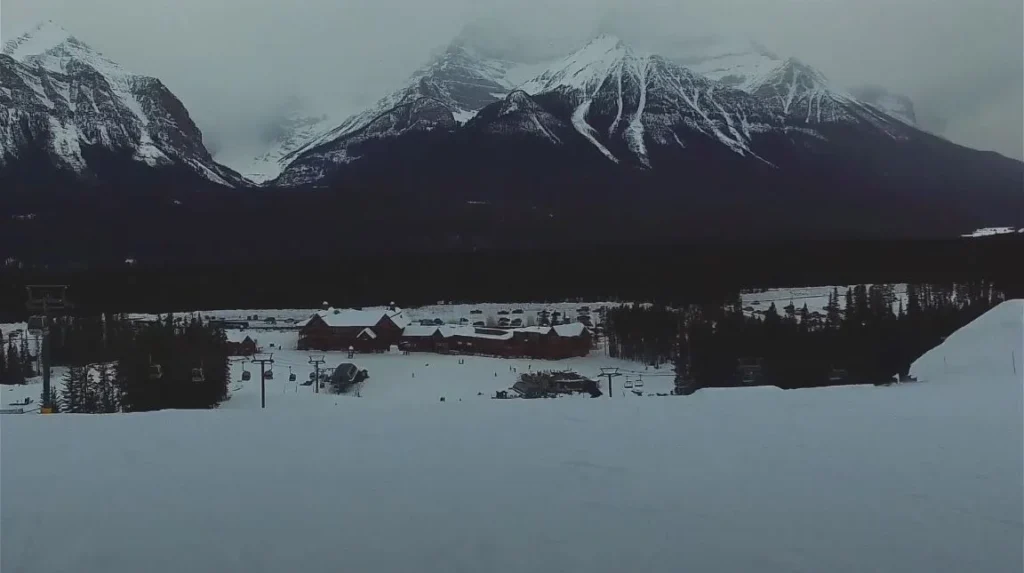
If you’ve never skied before, Alberta might seem intimidating. Don’t let it be. All three major resorts have excellent beginner infrastructure:
Lake Louise – Beginner Experience:
- Wiwaxy area: Dedicated beginner zone, separated from main mountain.
- Gentle, wide runs perfect for learning.
- Magic carpet lifts (like a moving sidewalk) for first-timers.
- Ski school with patient, professional instructors.
- My observation: Saw multiple people progress from never-ever to green runs in one day.
Sunshine Village – Beginner Experience:
- Strawberry triple chair accesses long, gentle runs.
- Wide-open spaces reduce anxiety.
- Good progression terrain.
- Standout: The T-bar lift might be scary at first, but staff help you.
Mount Norquay – Beginner Experience:
- Smallest percentage of beginner terrain.
- Honest opinion: Not ideal for complete beginners.
- Better as a second or third destination once you’ve got basics down.
Beginner Tips I’d Give:
- Take a lesson: Group lessons are affordable and accelerate learning significantly.
- Rent equipment at the resort: Staff will ensure proper fit and adjustment.
- Start early in the day: Slopes are less crowded, snow is better groomed, you’re fresher.
- Don’t skip the helmet: Non-negotiable.
- Learn to stop before learning to go fast: Sounds obvious, but many skip this.
- Take breaks: Learning is exhausting; rest prevents injury and frustration.
For Intermediate Skiers
This is where Alberta truly shines. As an intermediate skier myself (comfortable on blues, attempting blacks cautiously), I found paradise here.
Why Intermediates Love Alberta:
Terrain Variety: Every resort has extensive intermediate terrain. You can ski all day without repeating runs or feeling overwhelmed.
Progression Opportunities: The natural layout of these mountains allows you to gradually attempt more challenging terrain. There are “easy blue” runs and “hard blue” runs, giving you stepping stones.
Scenic Rewards: Intermediate terrain often offers the best views. You can access higher elevations without tackling expert-only terrain.
My Intermediate Experience:
Day 1-2: Stuck to groomed blue runs, building confidence and getting familiar with the mountains.
Day 3-4: Started attempting black diamond runs that were marked as “easier blacks.” Some were successful, others humbling.
Day 5-6: Found my groove, mixing blues and blacks, choosing runs based on conditions and energy levels.
Day 7: Attempted a more technical black run and… let’s just say I walked a section. No shame. Lived to tell the tale.
Intermediate Progression Path:
- Master blue groomed runs on various terrain.
- Try blue runs in different conditions (morning hard pack vs. afternoon soft snow).
- Attempt mogul runs on easier terrain.
- Try “easiest” black diamonds on good weather days.
- Gradually increase difficulty as confidence builds.
- Don’t rush – injury comes from overconfidence.
For Advanced/Expert Skiers
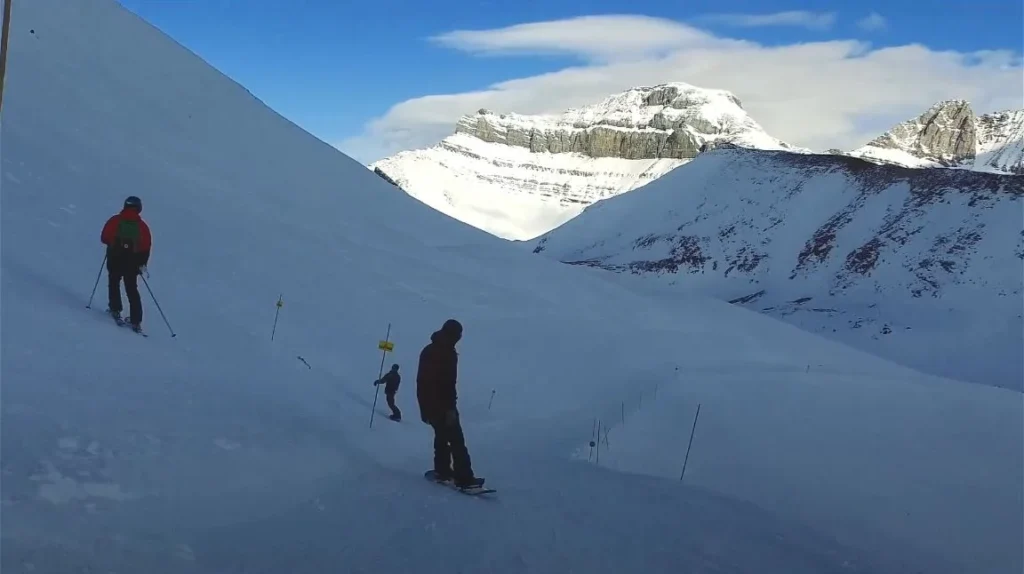
If you’re an expert skier, Alberta offers challenges that will test your abilities. I spoke with several advanced skiers during my trip and they were universal in their praise:
Expert Terrain Highlights:
Lake Louise:
- Summit Platter accesses steep, challenging terrain.
- West Bowl offers technical tree skiing.
- EB’s area for those seeking challenge.
- Expert opinion (from a ski patroller I met): “Lake Louise has terrain that humbles even professionals”.
Sunshine Village:
- Delirium Dive: Requires gear check and waiver signing.
- Goat’s Eye mountain: Steep chutes and technical runs.
- Wild West area: Ungroomed, natural snow features.
- I watched experts descend these runs – absolutely mind-blowing skill.
Mount Norquay:
- North American Chair terrain: Old-school steep, technical, demanding.
- Tight tree runs for expert tree skiers.
- Night skiing includes some advanced terrain.
What Expert Skiers Should Know:
- Terrain is well-marked and accurately rated.
- Snow conditions can make runs significantly harder.
- Respect rope lines – out-of-bounds is genuinely dangerous.
- Hire a guide for first day to learn the mountain.
- Many experts spend time in backcountry with proper guides and equipment.
Environmental Consciousness: Skiing Responsibly
Something that impressed me throughout my trip was the environmental consciousness embedded in Alberta’s ski culture. These resorts exist within or adjacent to protected national parks and there’s a genuine commitment to preserving this incredible landscape.
Resort Sustainability Initiatives
What I Observed:
Energy Efficiency:
- Many lifts now run on renewable energy.
- Lodge heating systems optimized for efficiency.
- LED lighting throughout facilities.
- Solar panels on several buildings.
Waste Management:
- Comprehensive recycling and composting programs.
- Reusable container discounts at food outlets.
- Minimal single-use plastics.
- Clear signage educating visitors.
Water Conservation:
- Snowmaking uses significantly less water than previous decades.
- Water recycling systems in lodges.
- Low-flow fixtures throughout facilities.
Wildlife Protection:
- Seasonal closures of certain areas during wildlife activity.
- Wildlife corridors maintained.
- Education programs for visitors.
- Strict rules about food storage and waste.
How You Can Ski Sustainably?
Based on my experience and conversations with locals, here’s how visitors can minimize their environmental impact:
Transportation Choices:
- Use shuttle services instead of driving when possible (reduces parking congestion and emissions).
- Carpool with other travelers.
- Consider electric vehicle rentals (charging infrastructure exists but is limited).
- Combine multiple ski days to reduce total travel.
On-Mountain Behavior:
- Stay on marked runs (prevents erosion and habitat destruction).
- Pack out everything you pack in.
- Use reusable water bottles (refill stations available).
- Choose vegetarian meal options occasionally (lower carbon footprint).
- Support resort sustainability programs.
Accommodation Choices:
- Choose hotels with environmental certifications.
- Reuse towels and linens.
- Turn off heating/cooling when you leave.
- Support locally-owned businesses.
Respect for Wildlife:
- Observe from distance.
- Never feed animals.
- Keep food secured.
- Report wildlife encounters to proper authorities.
The Indigenous Perspective
Something I learned during my visit that changed my perspective: This land is the traditional territory of Indigenous peoples, including the Stoney Nakoda, Ktunaxa, Tsuut’ina and Blackfoot Confederacy.
I attended a cultural presentation where an elder spoke about the spiritual significance of these mountains and the importance of treading lightly on the land. It was a powerful reminder that tourism and recreation must balance with respect for history, culture and the environment.
Ways to Honor Indigenous Heritage:
- Learn about the traditional territories you’re visiting.
- Support Indigenous-owned businesses.
- Attend cultural presentations when available.
- Understand land acknowledgment practices.
- Recognize that recreation is a privilege, not a right.
Practical Resources and Final Tips
Essential Apps and Websites
Before You Go:
- SkiBig3.com: Combined pass for Lake Louise, Sunshine and Norquay.
- Banff.ca: Official town website with everything you need.
- TravelAlberta.com: Provincial tourism resources.
- Alberta511.ca: Road conditions (ESSENTIAL for winter driving).
During Your Trip:
- OnTheSnow: Real-time snow reports and conditions.
- Mountain Hub: Social ski tracking and resort info.
- Avalanche Canada: Daily avalanche forecasts.
- Google Maps: Download offline maps before heading to mountains.
- OpenSnow: Detailed weather forecasting.
- AllTrails: For winter hiking and snowshoeing.
Money-Saving Strategies
Based on my experience and conversations with locals:
Advance Booking:
- Lift tickets: Save 20-30% buying online weeks in advance.
- Accommodation: Book 3-6 months ahead for best rates.
- Flights: Tuesday/Wednesday flights often cheaper than weekend.
Multi-Day Passes:
- 3-day pass typically saves 15-20% versus individual days.
- SkiBig3 pass offers best value for multiple resorts.
- Season passes pay off after ~10 days (if you’re planning extended stay).
Off-Peak Timing:
- Early December or late March offers 30-40% accommodation savings.
- Weekday skiing typically less crowded and sometimes cheaper.
Accommodation Hacks:
- Canmore generally 20-30% cheaper than Banff for comparable quality.
- Airbnb with kitchen saves significant money on meals.
- Hostels in Banff offer clean, social, budget-friendly options.
Food Savings:
- Grocery shop in Calgary before heading to mountains (significantly cheaper).
- Pack lunches for ski days ($20+ saved per day).
- Happy hour specials at restaurants (typically 3-6 PM).
- BeaverTails for breakfast instead of restaurant ($10 vs $20).
Equipment:
- Rent in Canmore or Calgary (cheaper than resort rentals).
- Multi-day rentals offer better daily rates.
- Bring your own helmet if possible (saves $15/day).
What I Wish I’d Known Before Going
Honest Reflections:
1. Altitude Takes Time: I pushed too hard on day one and felt terrible that evening. Give yourself time to adjust.
2. Layers Are Everything: You can’t over-prepare for temperature fluctuation. I was constantly adding or removing layers.
3. Sunscreen in Winter Is Critical: I got a horrible sunburn on day two because I assumed winter meant no sun risk. Wrong.
4. Après-Ski Culture Is Real: Some of my best memories came from conversations in lodge bars after skiing. Don’t rush off immediately.
5. Rest Days Are Valuable: I felt guilty taking a day off skiing, but it prevented injury and exhaustion. Listen to your body.
6. The Drive Is Part of the Experience: Don’t rush through it. Stop at viewpoints, take photos, absorb the journey.
7. Weather Can Change Everything: Have backup plans for bad weather days. Museums, hot springs and restaurants saved me when whiteout conditions hit.
8. Local Knowledge Is Gold: Chat with ski instructors, lift operators and locals. They know the mountain better than any app.
9. Early Mornings Matter: First tracks on fresh groomed snow is a completely different experience than afternoon skiing.
10. It’s Not Just About Skiing: Some of my favorite moments had nothing to do with skiing – Lake Louise at sunset, random conversations, watching elk, eating incredible food.
Final Reflections: Why Alberta Changed My Perspective
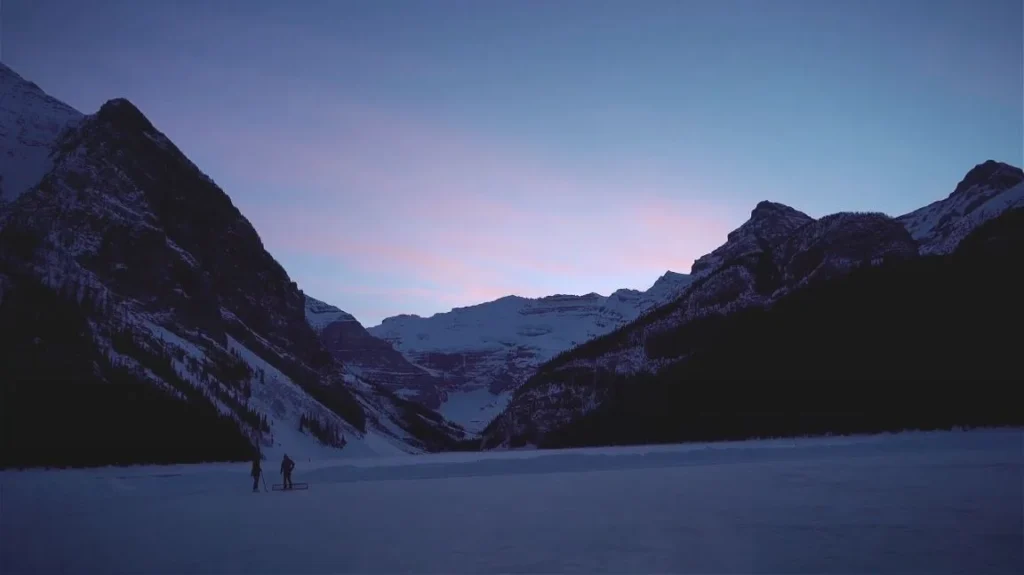
As I stood on the frozen Lake Louise on my final evening, watching the alpenglow fade from the peaks and the first stars emerge, I realized this trip had given me something unexpected. Yes, the skiing was world-class. Yes, the scenery was breathtaking. But more than that, Alberta taught me about balance.
Balance between challenge and comfort. Between adventure and safety. Between tourism and environmental responsibility. Between pushing limits and knowing when to rest.
The Canadian Rockies are ancient – they’ve stood for millions of years and will stand for millions more. But our ability to experience them, to ski these slopes, to call this recreation – that’s fragile and temporary. It requires consciousness, respect and responsibility.
For Fellow Travelers
I’ve built on authentic travel experiences and Alberta ranks among the most authentic adventures I’ve had. This wasn’t a sponsored trip where everything was arranged and perfect. It was real travel with challenges, unexpected moments and genuine discoveries.
What Made This Trip Special:
Authenticity: People here are genuinely friendly, not tourist-friendly. There’s a difference.
Natural Beauty: No filter needed, no exaggeration required. It’s simply stunning.
Accessibility: World-class skiing without European prices or intimidation factor.
Community: Whether in Calgary, Canmore or Banff, I felt welcomed into a community rather than processed as a tourist.
Diversity: From luxury to budget, beginner to expert, party to solitude – Alberta accommodates every travel style.
To Anyone Considering This Trip
If you’re reading this and wondering whether Alberta skiing is worth it, let me be clear: Yes. Absolutely yes.
Whether you’re a first-time skier nervous about trying something new or an expert looking for challenging terrain. Whether you’re traveling solo, with friends or with family. Whether you have three days or three weeks. Whether you’re on a tight budget or ready to splurge.
Alberta offers something for everyone, but more importantly, it offers the space to discover what you’re looking for – even if you didn’t know you were looking for it.
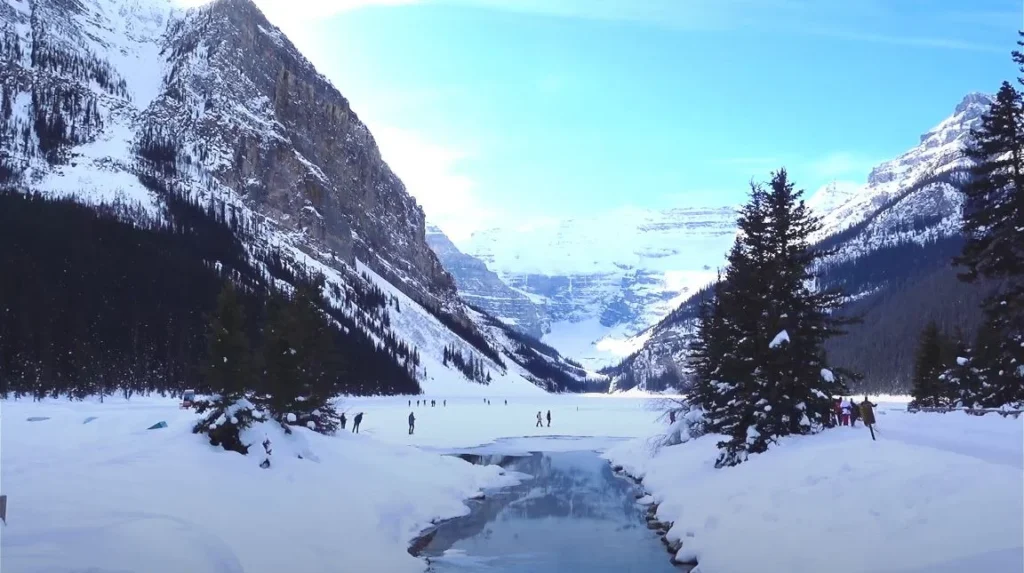
The memories I took from this trip aren’t just about the skiing, though those powder runs will stay with me forever. They’re about the elk I watched from my hotel window. The BeaverTail I ate while snow fell softly around me. The conversation with a lifelong ski instructor who told stories spanning five decades. The sunset that painted the mountains pink and orange while I sat in a natural hot spring. The moment I realized I’d pushed myself further than I thought possible, both physically and mentally.
Parting Advice
Start Planning: If this article has inspired you, start planning now. The best accommodations book months in advance and ski passes offer early booking discounts.
Be Open: Your trip won’t match mine exactly and that’s perfect. Your weather will differ, your experiences will be unique, your challenges and triumphs will be your own.
Stay Safe: Take every safety recommendation seriously. The mountains are beautiful but unforgiving to those who don’t respect them.
Go Slow: Don’t try to see and do everything. Pick a few priorities and really experience them rather than rushing through a checklist.
Document Everything: Take photos, keep a journal, collect memories. These experiences become more valuable with time.
Share Responsibly: If you’re creating content (like I do), be honest about your experience, respect the environment in how you portray it and inspire responsible tourism.
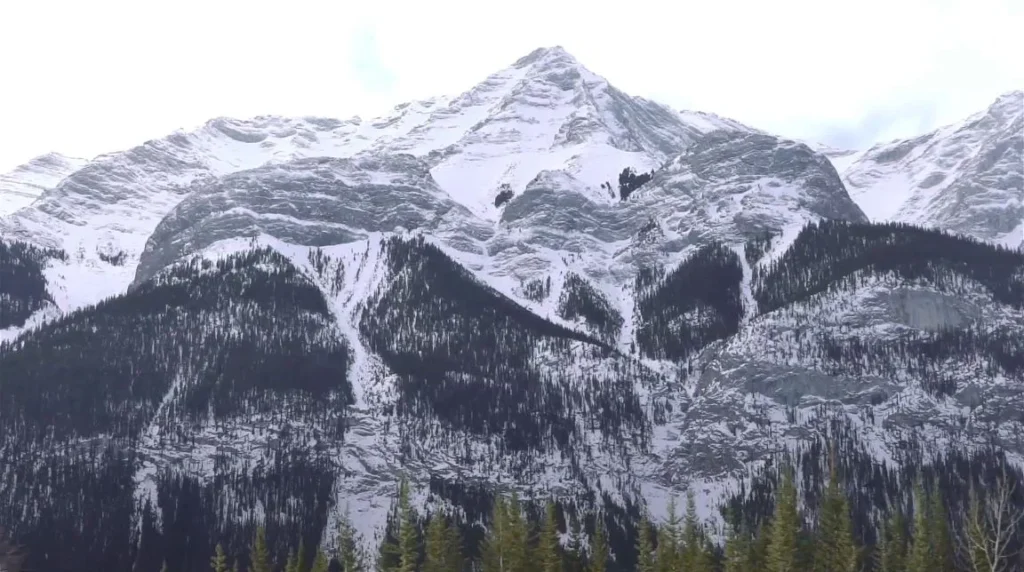
Conclusion
Standing at the airport, waiting for my return flight to London, I already knew I’d be back. Alberta had gotten under my skin in the way special places do. It wasn’t just a destination I could check off a list; it was the beginning of a relationship with a place that demands return visits.
The Canadian Rockies represent something increasingly rare in our crowded, over-touristed world: authentic wilderness accessible to anyone willing to make the journey. Yes, there’s infrastructure and development. Yes, there are crowds at peak times. But the vastness of these mountains humbles all human presence. You’re constantly aware that you’re a guest in a wild place and that awareness brings a necessary humility.
For my readers and followers who have followed my adventures around the globe, Alberta ranks in my top five destinations ever. It combines the stunning scenery of Switzerland, the accessibility of Colorado, the snow quality of Japan and a uniquely Canadian warmth and friendliness that makes the entire experience special.
Whether you’re booking a trip right now or just dreaming for future travels, know this: The mountains will be there. They’ve waited millions of years; they’ll wait for you. But don’t wait too long. Life is short, powder is temporary and these experiences shape who we become.
So pack your bags, book that flight and I’ll see you on the slopes.
